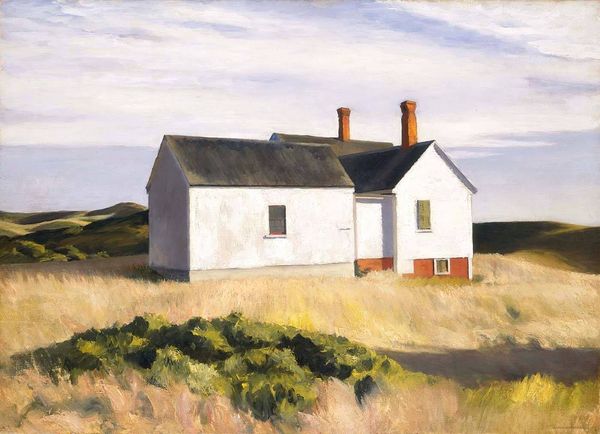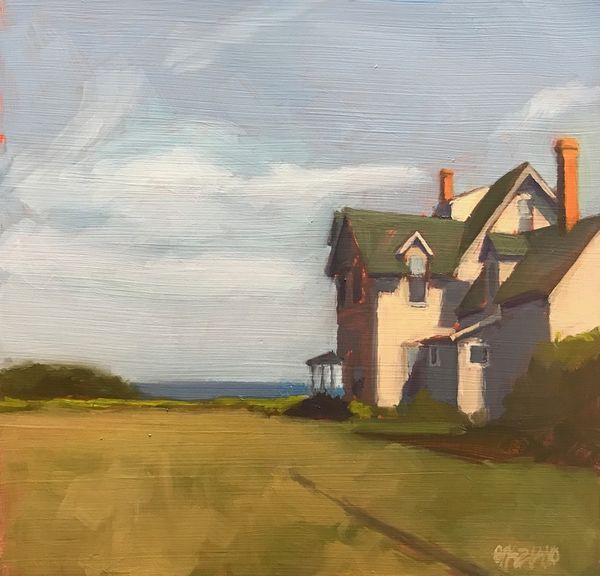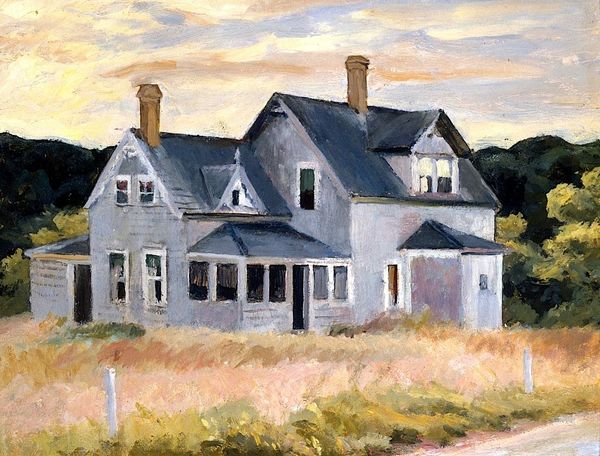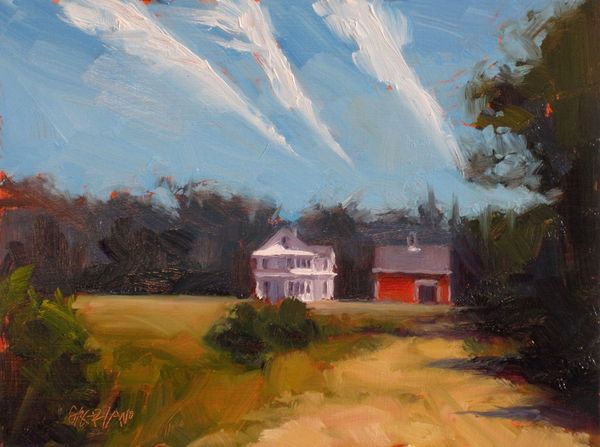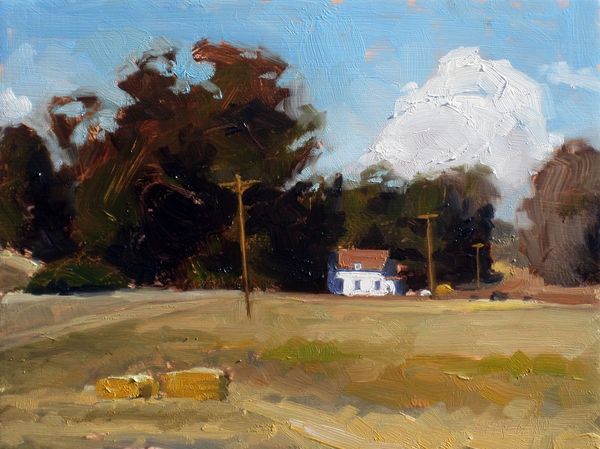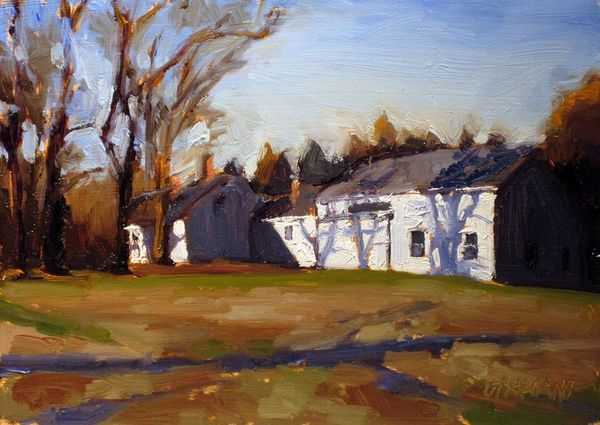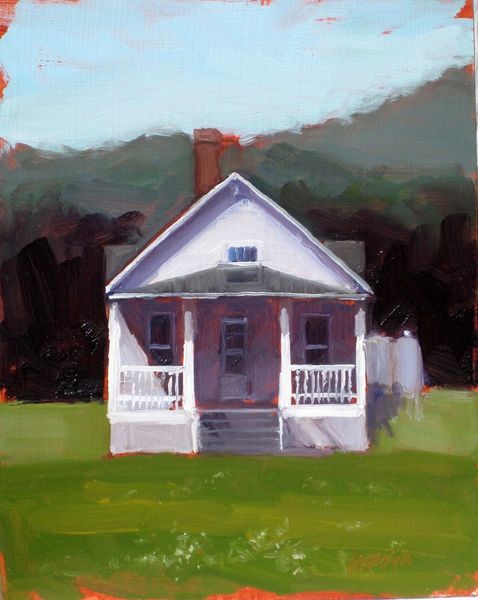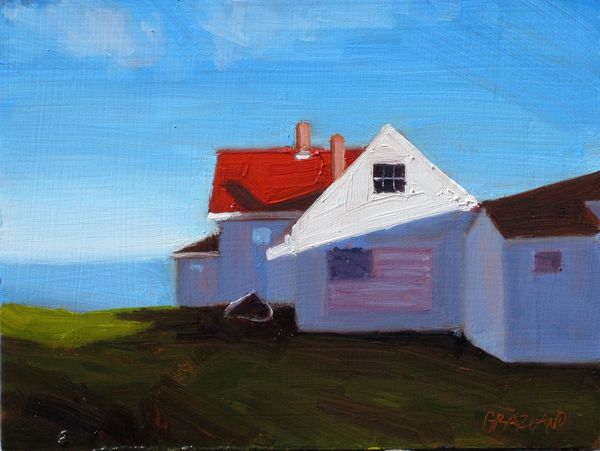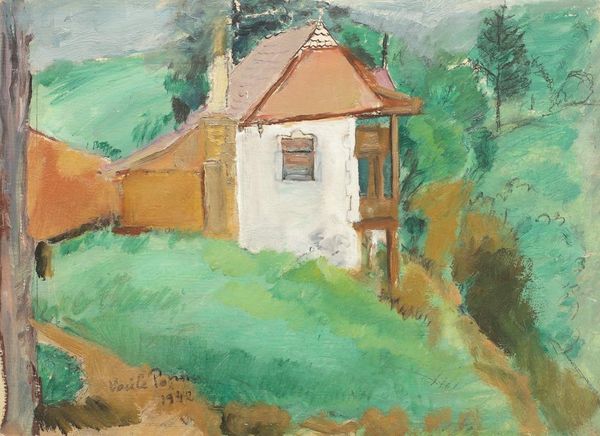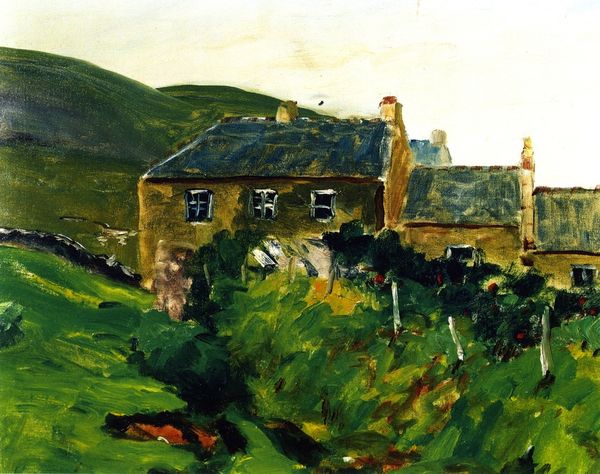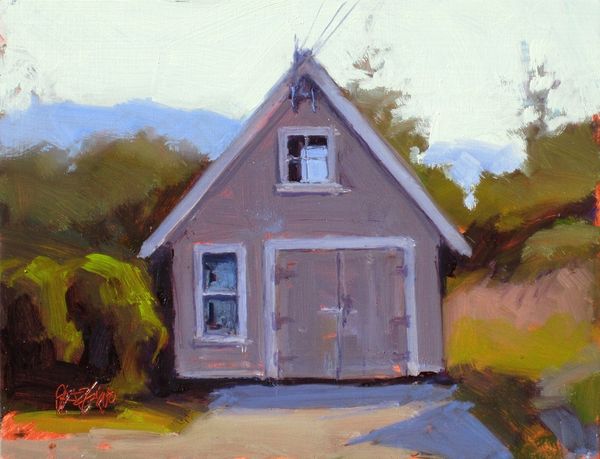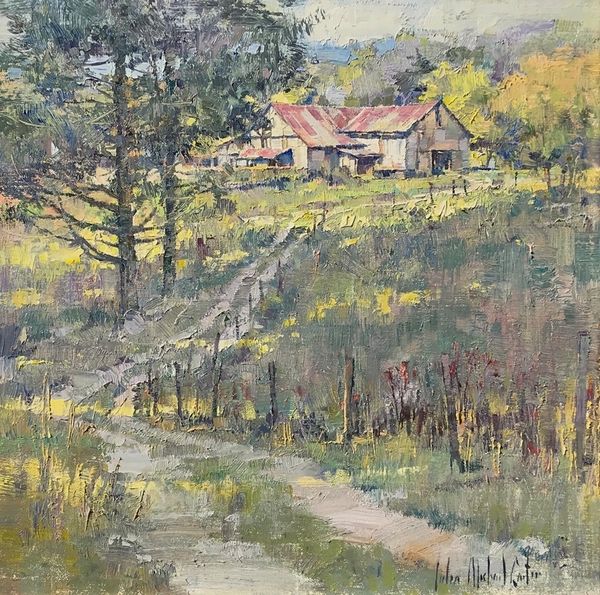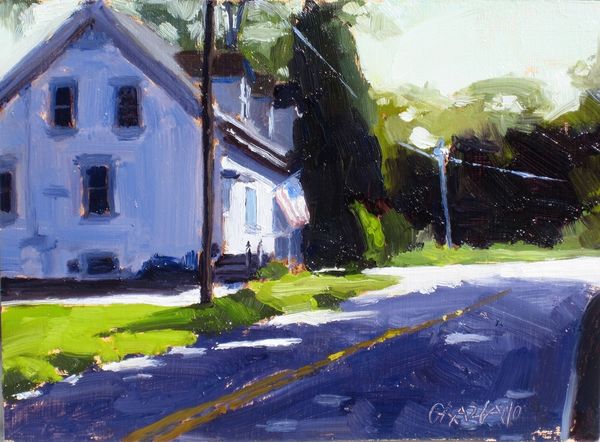
painting, plein-air, oil-paint
#
painting
#
impressionism
#
plein-air
#
oil-paint
#
landscape
#
impressionist landscape
#
oil painting
#
cityscape
#
watercolor
#
realism
Copyright: Modern Artists: Artvee
Curator: This is "Three Chimneys" by Dan Graziano. It appears to be an oil painting, possibly done en plein air. The structure suggests an interest in the interplay between architecture and the organic environment. Editor: It’s immediately appealing, isn’t it? There’s a kind of cozy, almost childlike feeling to it. The colors are muted but warm, and the brushstrokes are so loose it feels like you could just step right into the scene. Curator: Exactly, there’s an artifice in that immediacy, of course. Oil paint allowed for a layered process here, a careful study in representing natural light on manufactured surfaces. The application looks very deliberate to me. We can talk about the support also—what surface allows this specific process of building an image. Editor: You know, seeing those chimneys rising so boldly, they make me think of domesticity. It's like each chimney represents a life, a fire burning within the home. Maybe it's sentimental, but I can't help but feel a sense of belonging. Curator: Well, the "home" itself is an economic product and entity. Considering its materiality—wood, glass, and metal all extracted, processed, transported, and assembled. These processes can all be interrogated socially and economically. Even the act of painting en plein air connects to consumer culture, needing easels, paints, and canvases—all commodified for artistic expression. Editor: Yes, and even within all of that structure, I keep coming back to that very evocative quality! You feel the artist reveling in the play of light, capturing a fleeting moment of peace, which has an appeal that extends past a technical process. The scene breathes and holds its breath. It teases and allows access to the viewer, who could see the home as beautiful and beckoning rather than alienating or foreboding. Curator: Perhaps that contrast is precisely where the painting finds its interest—at the intersection of our personal connection to nature versus the impact we have upon it through development. It also prompts us to reflect upon how we, as viewers, engage in commodification, appropriating landscapes as consumables, and perhaps further altering natural spaces to produce consumable items such as landscape painting. Editor: I agree with all of that. It gives a good, material grounding to what first comes across as simply beautiful. Thanks! Curator: You too. It is exciting how seeing those connections creates space for continued dialogue.
Comments
No comments
Be the first to comment and join the conversation on the ultimate creative platform.
